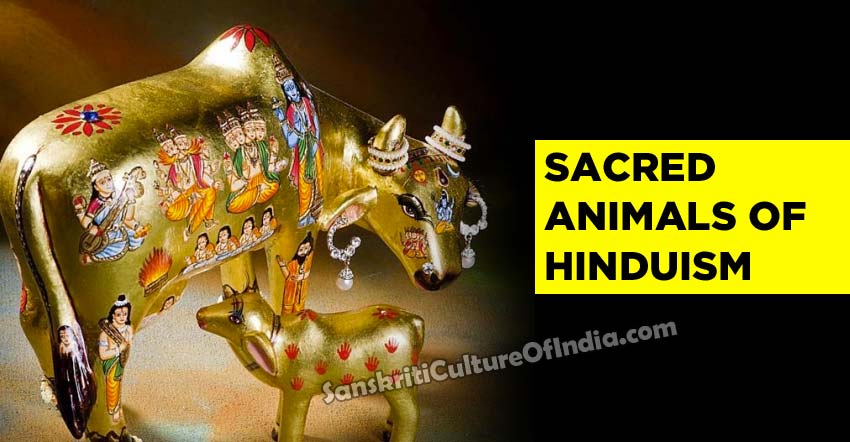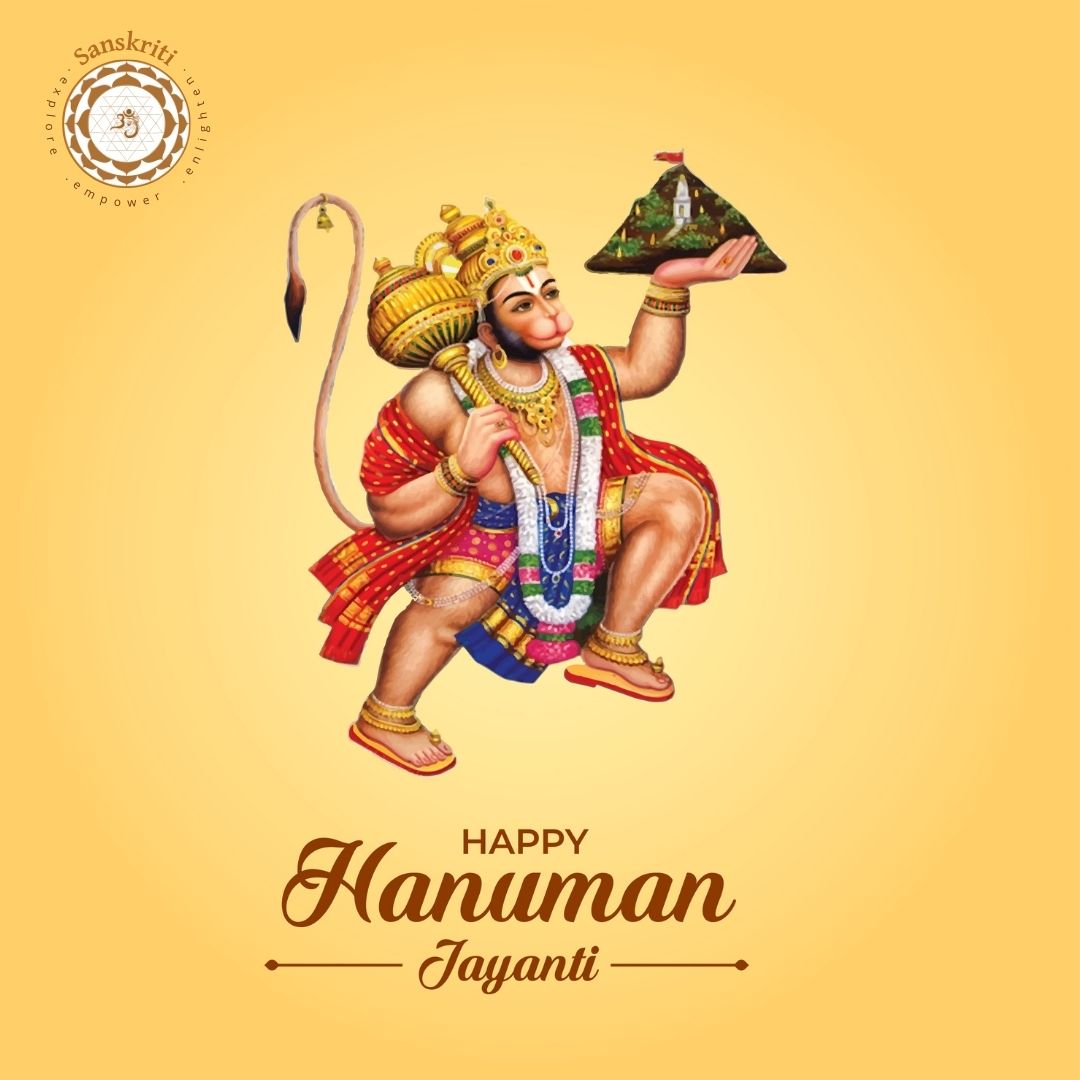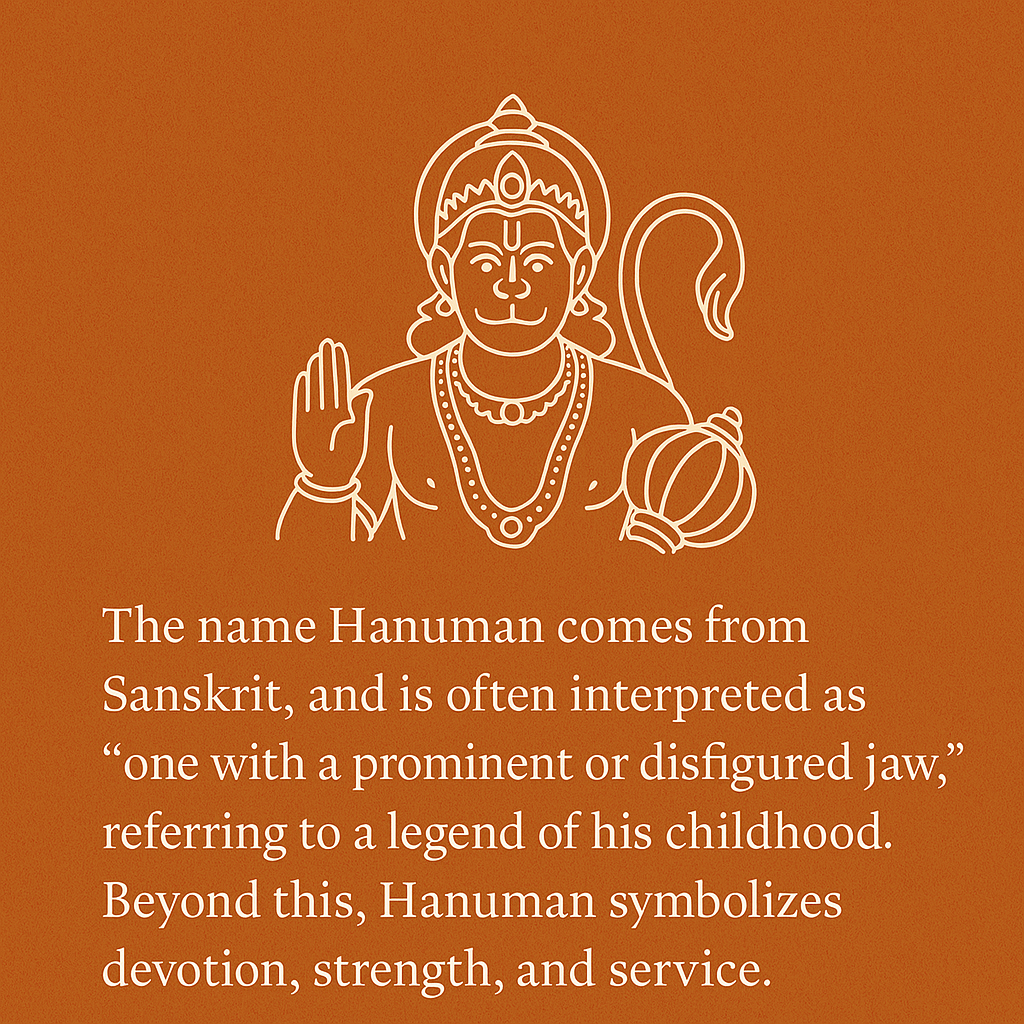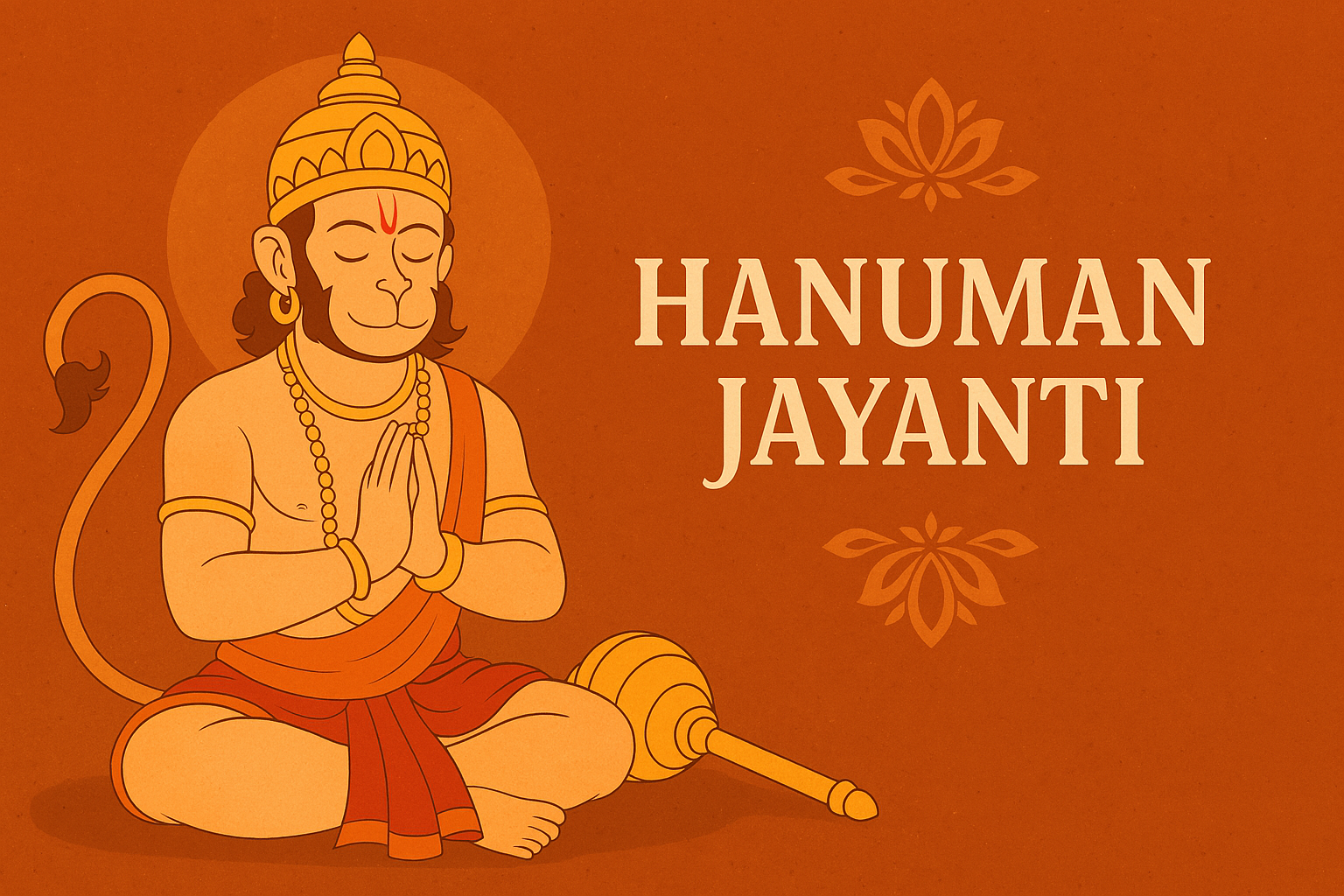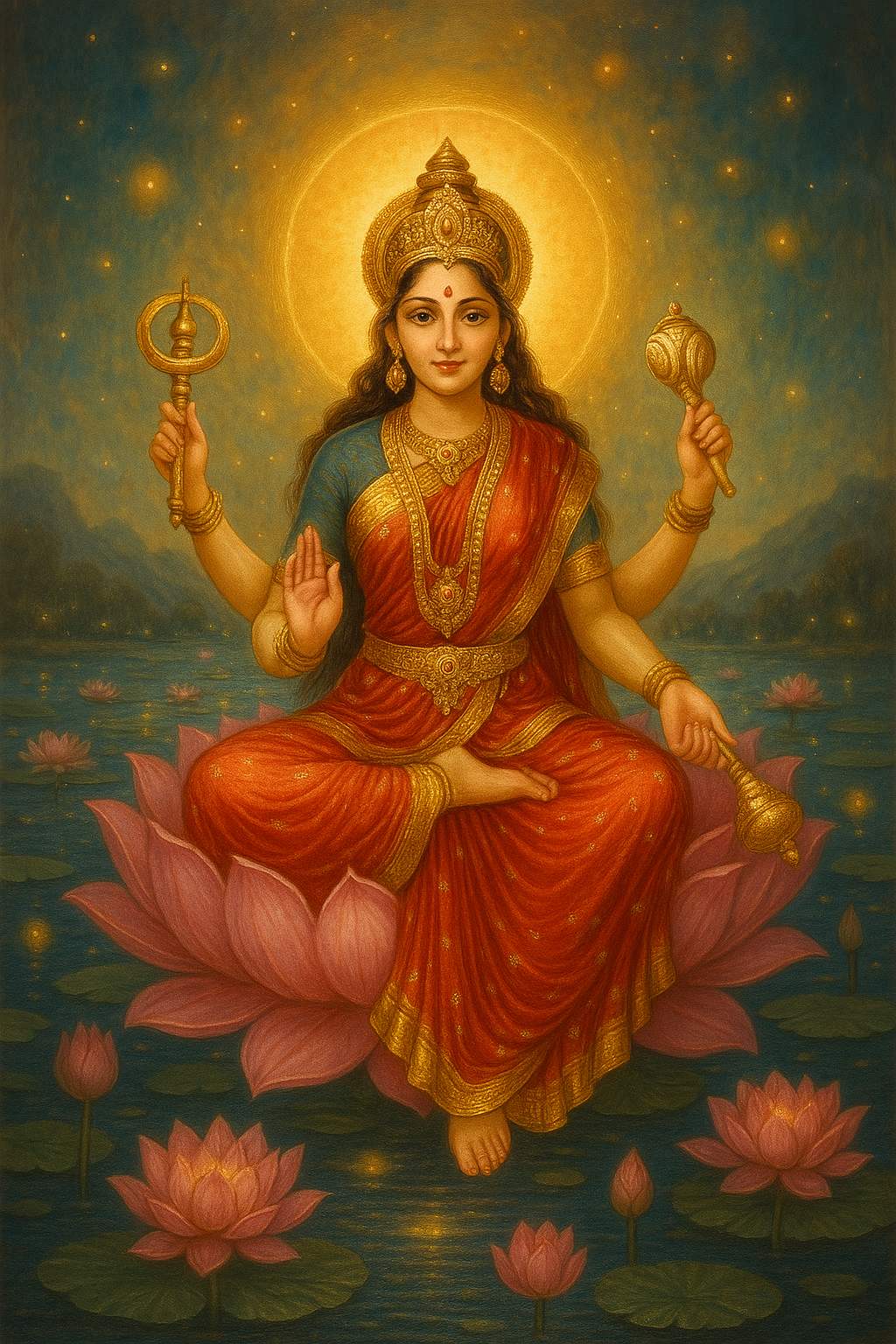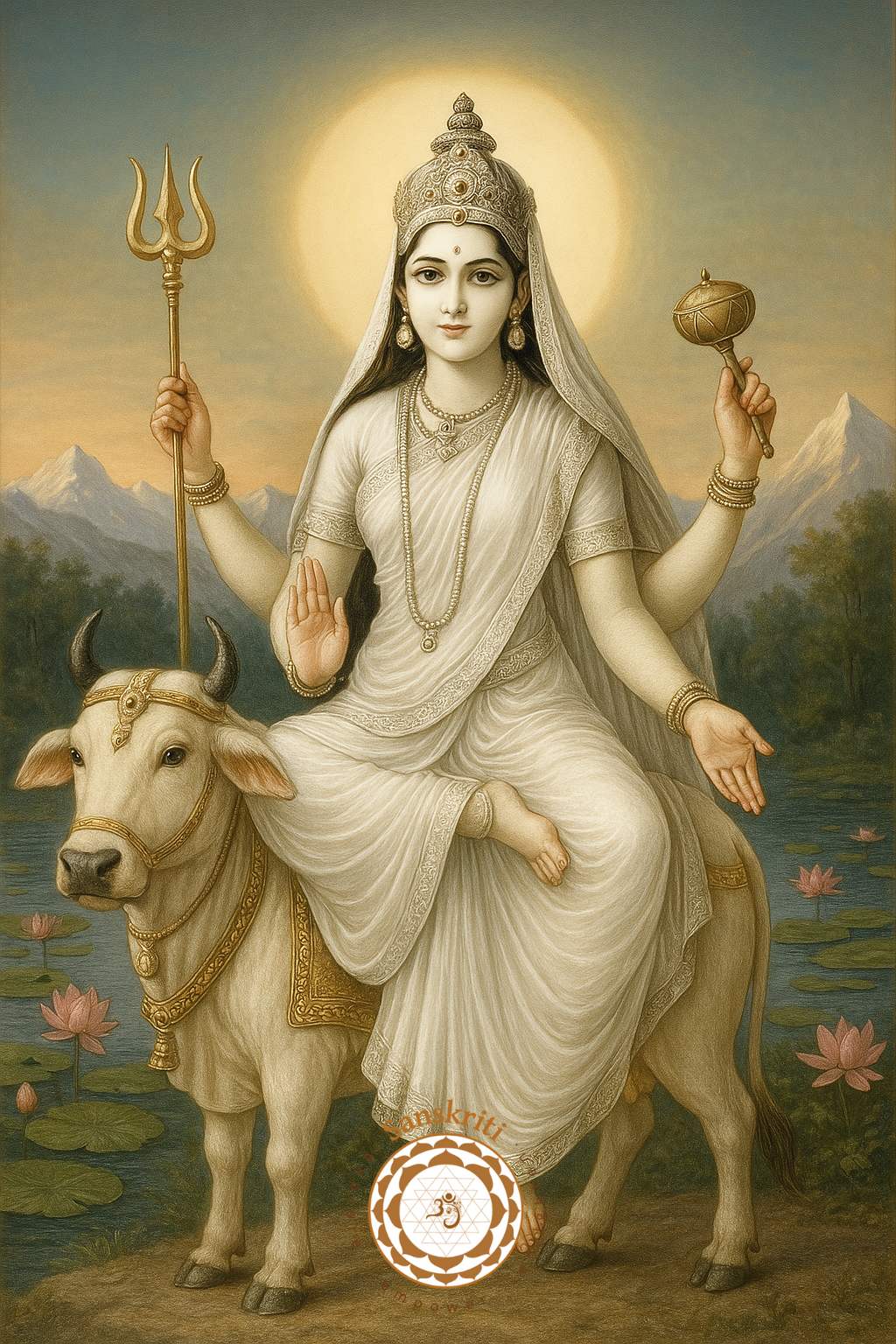[hr]
Hinduism abounds with stories of sacred animals as a divine being in animal form or with animal features. Most of these animals are pictured in stone or embodied in statues along with their corresponding deity but in some cases, living animals are also worshiped. Most Gods are connected with an animal representing their vahana or mount, representing central attributes of the Gods and Goddesses.
Divinities with forms of a human body and an animal head have a prominent place in Hinduism. There is the elephant headed Ganesha, Narasimha as a lion, the horse-headed Hayasiras and Hayagriva, the boar-headed Varaha and Hanuman, the monkey God. Then there are the snake-gods, the Nagas, who are shape-shifters and can take the form of a human being.
Below are some of the most important animals in Hinduism:
Indian Cobra or the Naga:
Of all the animals worshiped in India, the cobra snake has been one of the most significant symbol in Hinduism associated with wealth, power and fertility that has the longest history. Snake worship can vary from worship of the naga deities associated with water, direct worship of living snakes. Then there is the cosmic snake Vritra or Ahi (snake), the enemy of Indra in Rigveda that is sometimes referred to as the primordial snake in control of the cosmic water.
The word Naga is used primarily for cobras as divinities, also associated with names of human tribes as well as elephants.
“The Nāga of Indian mythology and folklore,” wrote J.P. Vogel, “is not really the snake in general, but the cobra raised to the rank of divine being” (Vogel, 1926, 27).
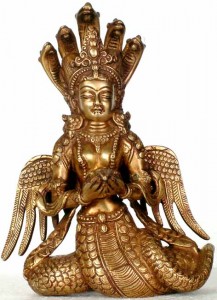 Connected to rain as well as the dark, creative, cosmic waters of the underworld, the nagas are thought to hide in the interior of the earth and appear on the surface, especially during rainy season. They are believed to be in control of such phenomenon as rain, storms and lightening. The skin shed by the snake represents victory over life and death, leading to immortality and liberation.
Connected to rain as well as the dark, creative, cosmic waters of the underworld, the nagas are thought to hide in the interior of the earth and appear on the surface, especially during rainy season. They are believed to be in control of such phenomenon as rain, storms and lightening. The skin shed by the snake represents victory over life and death, leading to immortality and liberation.
The Brahamanas, the Mahabharata, the Puranas and the Jatakas use the word “Nagas” only for the mythological serpents while snakes living in nature are called “sarpas”. Nagaloka, the snake world mentioned in the Mahabharata is a beautiful abode of wealthy palaces and the cobra, therefore, thought of as being the guardian of wealth and treasures.
In Vaishnavism, Seshnaga is one of two vahanas or mounts of Lord Vishnu during his resting period on the cosmic waters, coiling up to provide the bed and creating a canopy over the head. Krishna’s brother, Balarama is said to be the incarnation of Sheshnaga. Some scriptures speak of a great white snake leaving Balarama’s mouth after his death heading towards the ocean where it was met by other nagas.
In Shaivism, a cobra is seen coiled around Lord Shiva’s neck, representing power over destruction and creation. It is also believed that Lord Shiva also controls the most dangerous creatures in the world.
According to Buddhist traditions, the nagas transferred their power over nature and wealth to the Buddha, thus asserting the superiority of Buddhism over them.
Snakes are worshipped for their power and protection, for fertility and healing of disease, but snakes have a dual nature. They are benevolent and when treated properly protect the family and give fertility. But if not treated properly, they become dangerous. One regional difference is that in North India the worship of has an iconographic representation, while in western and South India the snake is worshiped both as a live animal and in iconographic representations. In Bengal, however, the snake is worshipped as the anthropomorphic snake-goddess Manasā.
Nagapanchami is the festival associated with snake worship, celebrated on the fifth day in the month of Shravana (July-August).
The Sacred Cow:
Compared to the dual nature of the snake, the cow represents pure goodness, altruism and motherly love. In Hinduism, the celestial cow, Kamadhenu is considered to be the mother of all Gods, believed to grant any wish to a true seeker. Although there are a few temples dedicated to Kamadhenu, the cow is not a god worshiped with murtis or statues in temples as are Ganesha and Hanuman.
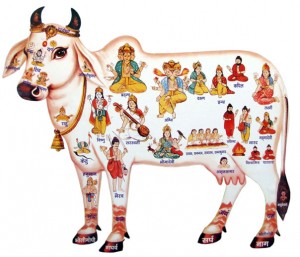 In vedic literature, the cow and bull are mentioned more often than any other animals, and it has been argued that no other sacred literature gives as much importance to the cow as does this literature (Brown, 1957). In the late vedic period, cow dung and ghee (clarified butter) were assuming the purificatory role they now have in Hinduism.
In vedic literature, the cow and bull are mentioned more often than any other animals, and it has been argued that no other sacred literature gives as much importance to the cow as does this literature (Brown, 1957). In the late vedic period, cow dung and ghee (clarified butter) were assuming the purificatory role they now have in Hinduism.
Muslim rule in India did much, indirectly, to promote the sacredness of the cow (Lodrick, 1981). The use of the cow as political and cultural symbol against Muslim rule achieved its greatest success during the Maratha struggle against Mughal rule in the 17th century.
“The slaughter of cows, the presence of Moslem butchers, the eating of beef, all offended the sensibilities of the orthodox Hindu and were used by the brahmans to generate Hindu feeling against Islamic religion and culture” (Lodrick, 1981, 64–65).
Further, the cow and ahimsa were identified with the struggle against British imperial rule. The British predilection for beef also did much (indirectly) to further the cause of cow protection in India. Gomātā (“Mother Cow”) became the emblem of Indianness in opposition to the British presence.
The cow is most commonly associated with Shri Krishna, usually depicted as a cowherd and called Gopala that literally means “protector of cows”.
The brown coloured cow, Kapiladhenu is considered to be the most sacred of all cows.
Fish:
The first avatara of Lord Vishnu known as Matsya, having an upper torso of a man and the lower that of a fish. Goddess Meenakshi’s name comes from the words meen (fish) and askhi (eyes), depicting that the Goddess’ eyes are always open like a fish, and watches over her devotees.
The Asiatic Black Bear:
Jambavantha, the black bear is a warrior hero who played an important role in ancient times from Tretya Yuga to Dwapara Yuga.
He helped Indra fight battles with Asuras.
In Ramayana, he helped Rama find Sita and fought Ravana, her abductor.
In Dwapara Yuga, Jambavan found the Syamantaka Mani after killing a lion and gave it to his daughter Jambavati to play with.
Syamantaka Mani belonged to Surya, the Sun God, possessing magical qualities of protection against all evils while producing gold every day. He gave the gem to one of his devotees, Satrajit, a Yadava nobleman, who in turn later presented it to his brother Prasen.
Prasen lost the gem while hunting in the forest and Satrajit blamed Krishna of stealing it. To clear his name, Shri Krishna sought to find out the true culprit and recover the gem.
It is said that Jambavan and Shri Krishna had a ferocious combat for 28 days until Jambavan gradually grew tired. As the strongest living entity during his time, Jambavan finally realized the true nature of Shri Krishna and not only returned the jewel but also gave away his daughter’s hand in marriage.
Indian Star Tortoise:
The second incarnation of Lord Vishnu in the form of a gigantic tortoise who sat at the bottom of the ocean during Samudra Manthan. He helped the devas churn out amrit, the nectar of immortality by holding the mountain Mandara on his back.
Vulture:
In Ramayana, when Ravana was abducting Sita, a fierce battle took place between him and the vulture king, Jatayu. Fatally wounded, Jatayu lived long enough to inform about Sita’s abduction to Rama. Jatayu’s brother, Sampati played his role by confirming that Sita was imprisoned in Ashoka-vana.
Butterfly:
In Hinduism, it is believed that all souls reincarnate, take one body and then another, evolving through experience over long periods of time. Like the caterpillar’s metamorphosis into the butterfly, death doesn’t end our existence but frees us to pursue an even greater development. It is also the symbolism of importance of meditation. Just like the process of metamorphosis, a caterpillar becomes a beautiful butterfly after spending time in the cocoon, human beings must also practice meditation to metamorphose from ordinary mortals into enlightened beings.
Blackbuck Antelope:
The vahana of Vayu, the God of wind and Chandra, the Moon God, blackbuck antelope is held sacred by the Bishnoi tribes of Rajasthan who consider it a sin to kill these animals. Many people have died protecting these deer and the women have even breast-fed the antelopes.
Crow:
Believed to be the connection between the living world and the world of the dead, the crow holds a special place in Hindu religious rites. Identified with the departed souls or ancestors, certain communities observe the ritual of “panda pradhana”, the offering of cooked rice balls to the crow during Pitra Paksha where the forefathers are remembered.
The crow is also the vehicle of Lord Saneeshwara (Saturn), one of the navgrahs or nine planets in Vedic astrology.
In traditional Hindu families, the crow is offered a portion of the food before partaking in any meal.
Brahminy Kite:
Garuda, the vehicle of Lord Vishnu is a swift-flying Brahminy kite. Referred to as the king of birds, he has been given the status of a deity and thus worshiped.
Dog:
Lord Dattatreya is considered to be an incarnation of the Hindu Trinity – Brahma, Vishnu and Mahesh. He is usually depicted with three heads symbolizing each of the Trinity, depicting past, present & future and the three states of consciousness of waking, dreaming and dreamless sleep. He is always shown with four dogs, each symbolizing the four Vedas.
Peacock:
The peacock is associated with Saraswati, a deity representing benevolence, patience, kindness, compassion and knowledge. Peacocks have a special relation with Lord Krishna who wears peacock feathers on his head and ties them with his flute. These feathers are said to have been given to him by the peacocks themselves.
Peacock is also the mount of Hindu God of war Murugan, also called Kartikeya, the brother of Ganesha. The swan is also the carrier of Lord Brahma, the creator.
A swan is said to have a sensitive beak, which can distinguish pure milk from a mixture of water and milk. The swan thus symbolises discrimination between the good and the evil. Those who have attained great spiritual capabilities are sometimes called ‘Parama-hamsa’ (Great swan) on account of their spiritual grace and ability to travel between various spiritual worlds.
Water Buffalo:
Associated with Yama, the God of Death, the buffalo is sacred to the Todas of the Nilgiris.
The victory of Goddess Durga over a demon named Mahishasura (mahisha = buffalo, asura = demon) is celebrated on Vijayadashami.
Frog:
A symbol of reincarnation, the frog is likened to the many forms a soul may be reincarnated.
The word “Manduka” is Sanskrit for frog, literally meaning the “Frog Upanishads”. The book explains the meaning of the sound AUM as three stages of consciousness – A: Wakefulness; U: Dream state and M: deep sleep.
This Upanishad describes how yogis and munis leap from like “manduka” and vault themselves from the waking and dream states straight into the consciousness of the third state of bliss “sushupti”.
Squirrel:
Considered sacred after trying to help Lord Rama and his army build a bridge to Lanka by rolling in sand and then running to Sethu to shake it off. Pleased by the creature’s dedication, Lord Rama caressed the squirrel’s back, leaving three white stripes believed to be the mark of Lord Rama’s fingers.

